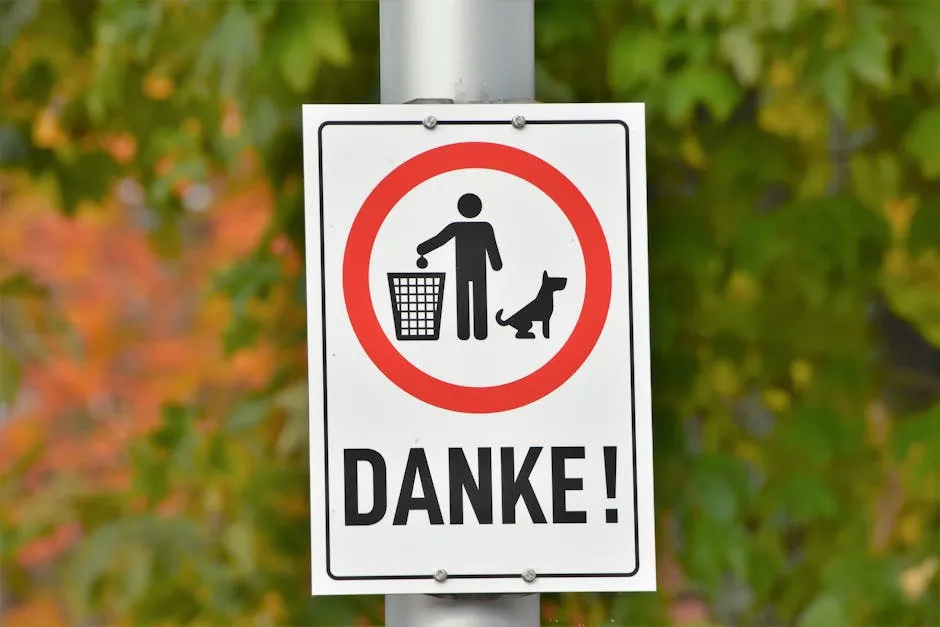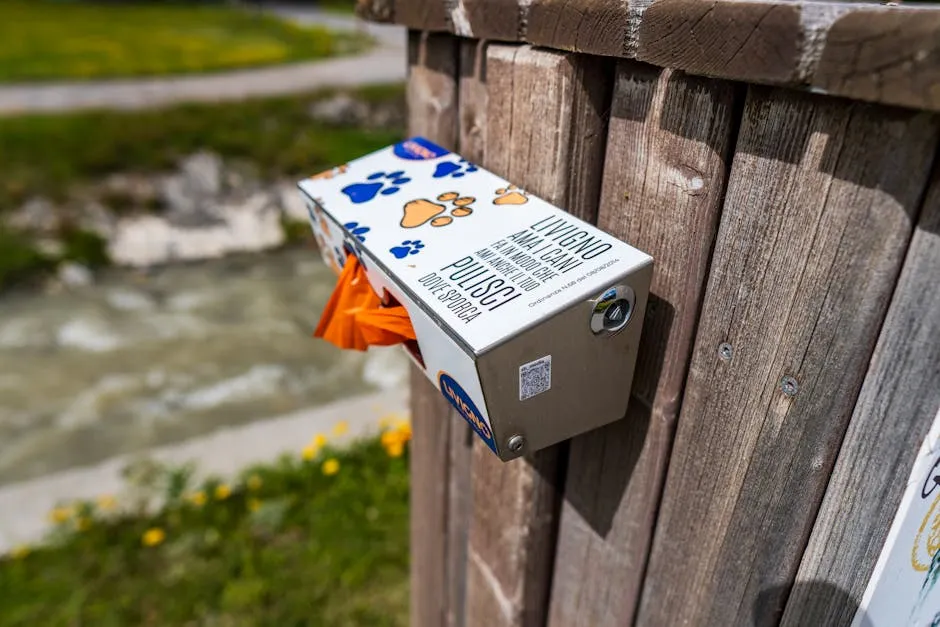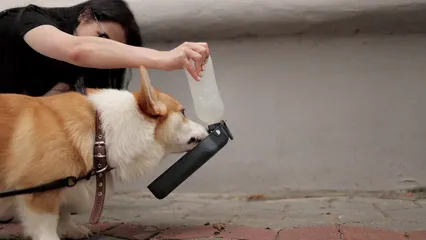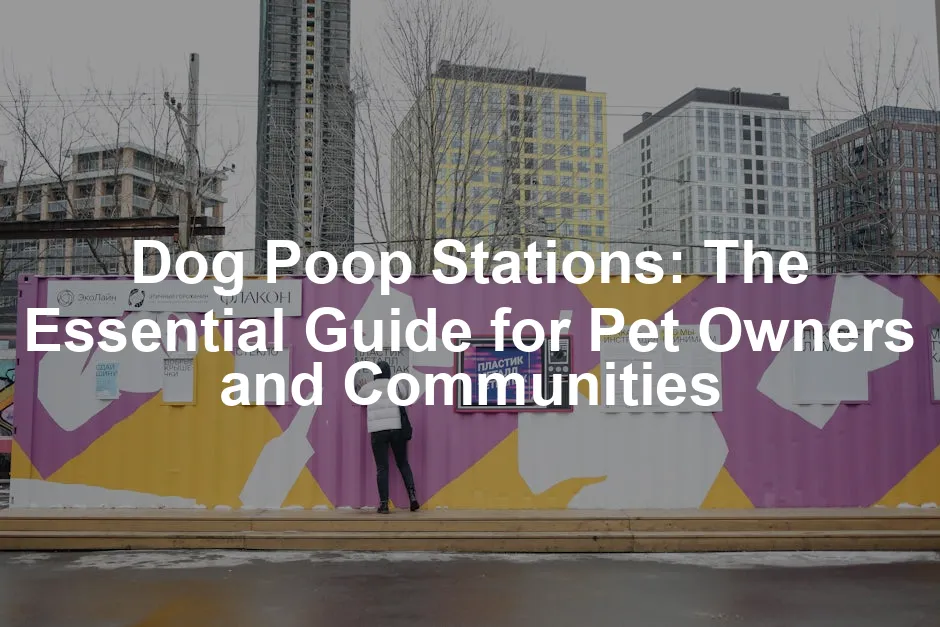Introduction
Dog poop stations are essential tools for pet owners. They keep public areas clean and hygienic. By providing easy waste disposal options, they encourage responsible pet ownership. This helps everyone enjoy cleaner parks and neighborhoods.
Speaking of keeping things tidy, have you ever tried using biodegradable dog waste bags? They break down naturally, making them a great choice for eco-conscious dog owners. You’ll be doing your part for the planet while keeping your neighborhood clean!
Summary and Overview
Dog poop stations typically consist of three main components: a bag dispenser, a waste bin, and a sign. These stations offer numerous benefits in parks, residential areas, and commercial properties. They help manage pet waste effectively, reducing the risk of contamination and unpleasant odors.
Statistics show that over 30% of dog owners do not clean up after their pets. This can lead to significant environmental issues. By placing poop stations in visible areas, communities can significantly improve cleanliness. Moreover, these stations promote responsible pet ownership, encouraging dog owners to do their part in keeping the environment clean.
And if you’re worried about running out of bags, a dog poop bag dispenser is a handy solution. It keeps bags easily accessible and ensures you’re always prepared for those unexpected moments.
The Importance of Dog Poop Stations
Why do dog poop stations matter? Untreated dog waste poses serious risks to both the environment and public health. It can contaminate water sources and contribute to the spread of parasites and diseases. Additionally, pet waste left on sidewalks or parks can create unpleasant odors and attract pests.
Dog poop stations play a crucial role in minimizing these problems. They provide pet owners with the necessary tools to clean up after their dogs. This simple act can lead to cleaner, safer communities. When waste is disposed of properly, it helps protect local wildlife and water quality. Responsible pet waste management is vital for maintaining a healthy environment for everyone.
For those who want to take cleanliness to the next level, consider getting a dog waste bin with lid. This keeps odors contained and prevents pests from getting into the waste, making your outdoor space much more pleasant.
Components of a Dog Poop Station
Overview of Key Elements
A dog poop station consists of several essential parts. First, the dog waste receptacle is crucial. It should be made of durable material, like heavy-duty plastic or galvanized steel. The size and capacity are important too, with options ranging from 10 to 30 gallons, depending on the expected usage.

Next is the bag dispenser. This component holds waste bags that allow dog owners to clean up after their pets easily. There are various types of bags available, including biodegradable options. Choosing high-quality bags ensures they won’t tear during use, making clean-up hassle-free.
Finally, there’s the station signage. A clear, friendly sign encourages dog owners to clean up after their pets. This simple reminder can significantly influence behavior, promoting cleanliness in the community. Well-designed signage can also include graphics or humorous messages to engage passersby. Together, these elements create an effective dog poop station that supports responsible pet ownership.
For those looking to maintain their stations, a pet waste station maintenance kit is a must-have. It ensures your stations are always in top shape, ready for use!
Types of Dog Poop Stations
Commercial vs. Residential Stations
Dog poop stations come in two main types: commercial and residential. Commercial dog waste stations are typically designed for high-traffic areas like parks and public spaces. They feature heavy-duty materials, often made from rust-proof aluminum or galvanized steel. These models are built to withstand frequent use and harsh weather.
On the other hand, residential dog waste stations are intended for home use. They tend to be smaller and often made from lighter materials like plastic. These stations usually include a bag dispenser and a basic waste receptacle. Popular models can easily blend into gardens or yards without being an eyesore.

When selecting a station, consider the environment. For busy parks with many dogs, a robust commercial model is ideal. For private homes, a stylish residential option can keep your yard clean while complementing your landscaping. Each type serves its purpose, ensuring cleanliness and convenience for dog owners.
Installation and Maintenance
Best Practices for Installation
When installing dog poop stations, location is key. Place them where dog owners frequently walk their pets. Ideal spots include near park entrances, along walking trails, or near popular gathering areas. Visibility is crucial; make sure stations are easily seen from a distance. This encourages users to keep the area clean.

Accessibility matters too. Ensure the stations are at a height that everyone can reach, including kids and those with disabilities. Consider weather conditions, as well. Install stations in sheltered areas to protect supplies from rain and wind. Proper placement maximizes usage, keeping parks and neighborhoods cleaner.
Maintenance Tips
Regular maintenance is vital for effective dog waste management. Empty receptacles at least once a week. In high-traffic areas, consider more frequent collections. Restock waste bags during each visit to ensure pet owners have what they need.
Inspect stations regularly for wear and tear. Check for any loose parts or damage, and address repairs promptly. This keeps stations functional and presentable. Remember, consistent maintenance not only preserves the stations but also promotes community pride and responsible pet ownership. By addressing these maintenance needs, you create a lasting impact on community cleanliness.
Community Benefits of Dog Poop Stations
Enhancing Public Spaces
Dog poop stations greatly enhance public spaces. They help keep parks and neighborhoods clean and odor-free. When waste is disposed of properly, it reduces health risks associated with untreated dog waste.

Moreover, these stations can serve as community focal points. They encourage social interaction among dog owners. Events or clean-up days can be organized around these stations, fostering community spirit. Ultimately, dog poop stations play a vital role in promoting a cleaner, healthier environment for everyone. Their presence reflects a community’s commitment to responsible pet ownership.
For those who want to reward their furry friends for good behavior, consider keeping a stash of dog treats and chews nearby. It makes training a lot more fun and rewarding!
Case Studies: Successful Implementation
Examples from Cities and Neighborhoods
Many communities have successfully installed dog poop stations, leading to notable improvements. For instance, a city park in Portland saw a 40% reduction in pet waste after implementing multiple stations. This change significantly enhanced community cleanliness and reduced unpleasant odors. Residents reported feeling more satisfied with the park’s upkeep.

In another example, a suburban neighborhood in Texas installed stations near walking trails. This initiative resulted in a 50% decrease in waste left behind. Community feedback reflected a stronger commitment to responsible pet ownership. Pet owners appreciated the convenience, making cleanup easier during walks.
These case studies highlight the positive impact of dog poop stations on community cleanliness. By providing accessible waste disposal options, neighborhoods can foster a cleaner, healthier environment for everyone.
Choosing the Right Dog Poop Station
Factors to Consider
Selecting the right dog poop station involves several important factors. First, consider the size. For high-traffic areas, a larger station with ample capacity is essential. In contrast, smaller residential stations suffice for less busy locations.

Next, assess the material. Heavy-duty options, like galvanized steel, withstand harsh weather better than plastic. These durable materials ensure longevity and reliability.
Finally, set a budget. Prices vary based on features and materials. For example, the IMPACTHOR Outdoor Pet Waste Station is a popular choice, offering 11.5 gallons of capacity and sturdy construction. Researching different brands helps identify the best dog waste station for your community’s needs.
By weighing these factors, you can choose a station that effectively promotes responsible pet waste management while enhancing community aesthetics.
Conclusion
Dog poop stations offer numerous benefits for pet owners and communities alike. They promote cleanliness in public spaces, making it easier for dog owners to dispose of waste responsibly. This reduces health risks associated with untreated dog waste and keeps parks and neighborhoods inviting for everyone.
Communities should advocate for the installation of these stations. By doing so, we can create a cleaner environment for our pets and ourselves. Responsible pet ownership is crucial. Let’s work together to nurture a culture of cleanliness and respect for our shared spaces.
FAQs
What are dog poop stations?
Dog poop stations are designated areas equipped with a bag dispenser, waste bin, and informative signage. They provide pet owners with convenient tools to dispose of dog waste responsibly, promoting cleanliness in public spaces.
Why should communities install dog poop stations?
Installing dog poop stations benefits the environment and public health. They help reduce the chances of water contamination and lower the risk of disease spread. Clean public spaces also encourage more people to enjoy outdoor activities, improving community well-being.
How often should dog poop stations be maintained?
Maintenance should occur at least once a week. In high-traffic areas, more frequent checks are advisable. Regularly emptying waste bins and restocking bags ensures that pet owners have the resources they need for responsible disposal.
What types of bags are best for dog poop stations?
Biodegradable bags are an excellent choice for dog poop stations. They break down over time, minimizing environmental impact. Ensure the bags are strong and durable to prevent tearing during use, providing effective waste disposal.
Can I install a dog poop station in my neighborhood?
Yes, you can! First, check with your local authorities for necessary permissions. Gather support from fellow residents to advocate for the installation. Collaborating with local businesses or community groups can also help facilitate the process.
Please let us know what you think about our content by leaving a comment down below!
Thank you for reading till here 🙂
For more information on the significance of dog poop stations, check out our detailed guide.
All images from Pexels





